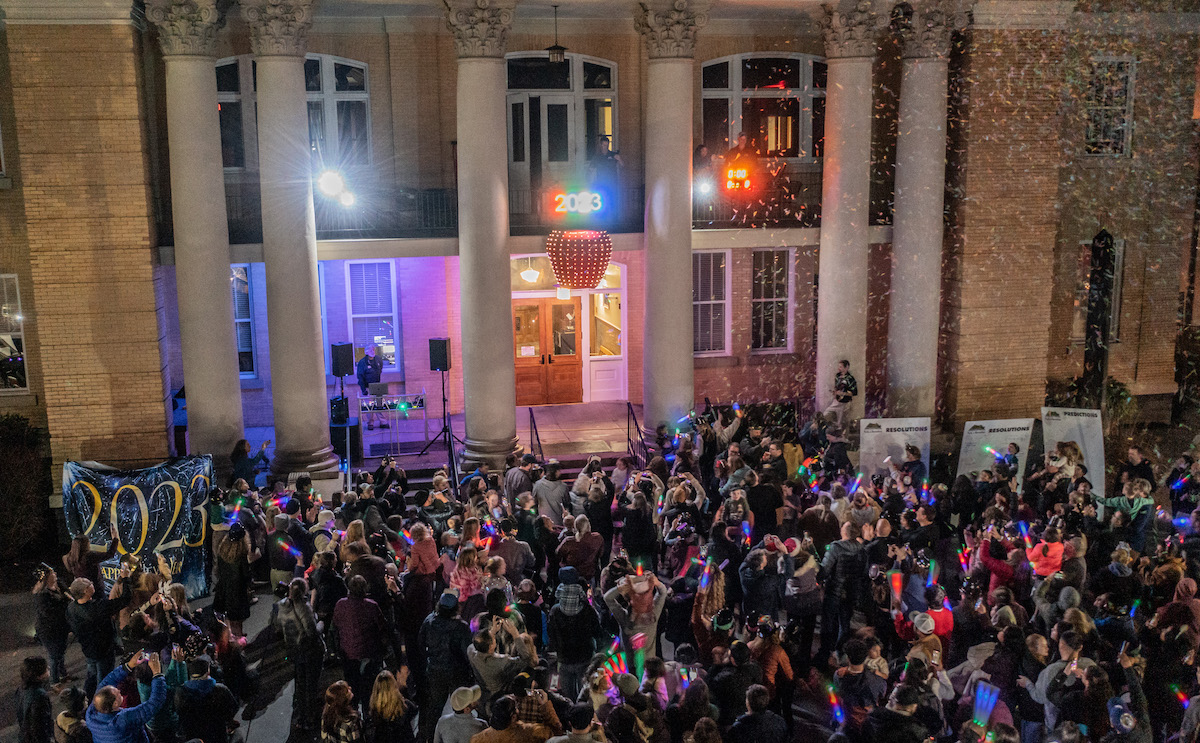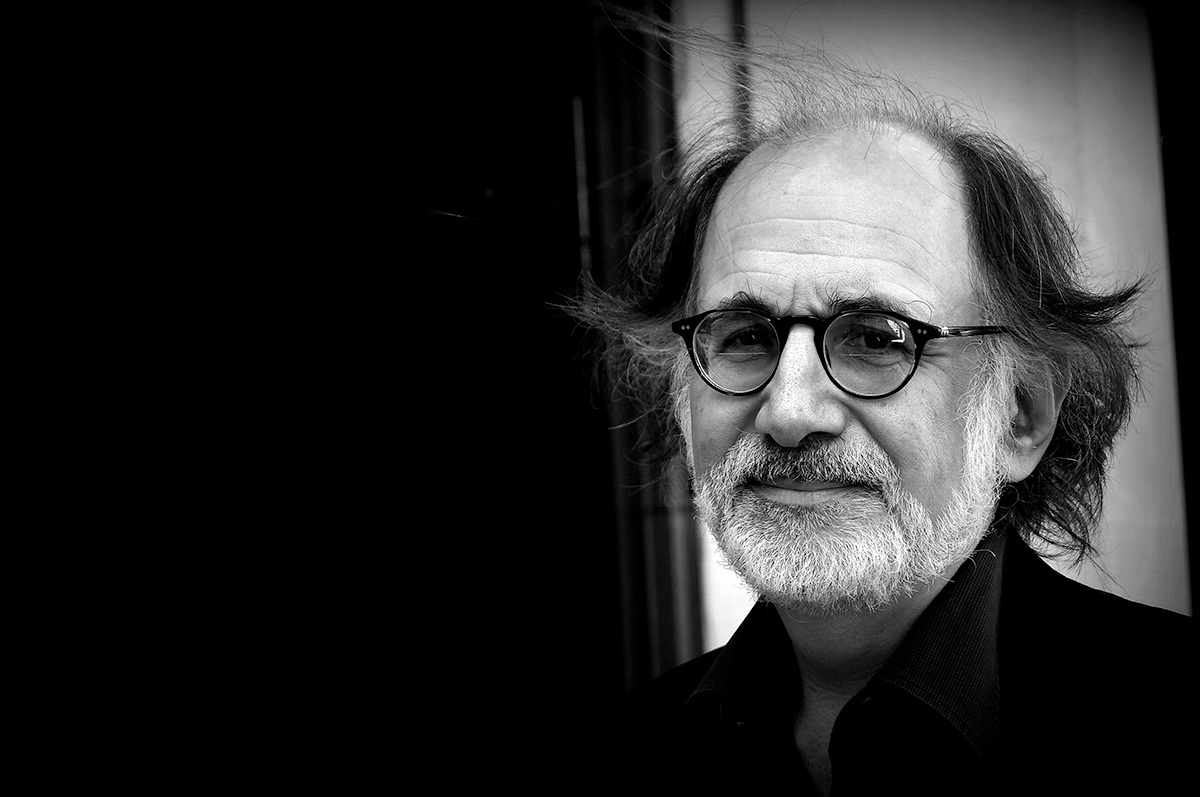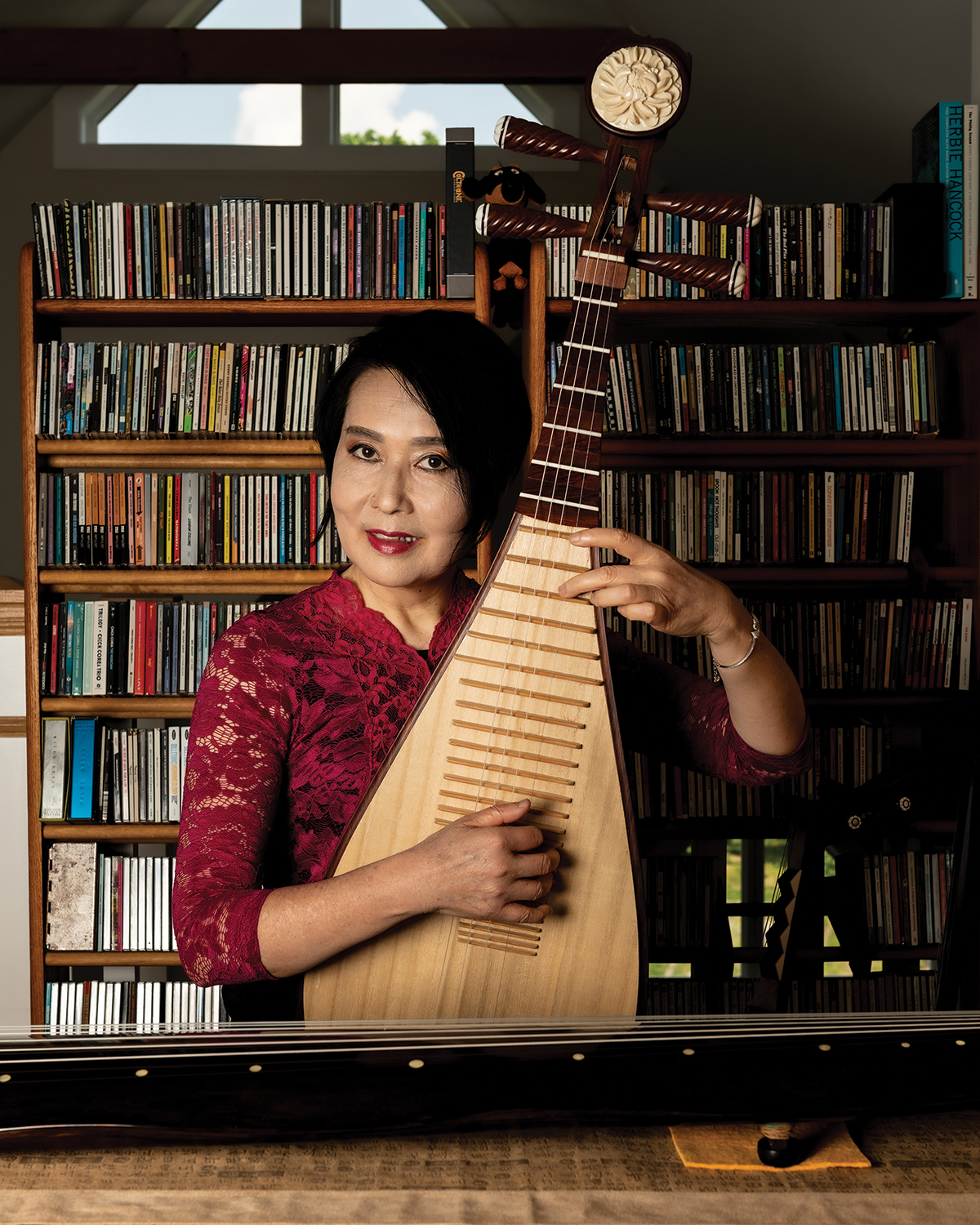Fresco master muses on war, work, and the gravity of authenticity

“The passion is the real thing,” says painter Ben Long.
Portrait by Karin Strickland
Artist Benjamin F. Long IV, who relocated from Asheville to Brevard not long ago, has always been a realist painter, with no desire to work from photographs or create abstracts. While discussing and acknowledging the enduring popularity of abstract expressionism, he points out that fine-art realism is itself a form of abstraction. After all, he says, a realistic painting of a live model is an artist’s own abstracted, albeit representative, interpretation of that person’s “ever-changing reality.”
“When you are painting from life, it’s all part of the same mystery,” explains Long. “Whoever is being painted will, every now and then, drift off — and if you look closely, you will see another kind of image, another reality. That is awesome, and I can’t do that from a photograph.

John the Baptist, fresco in the Basilica of Montecassino, Italy.
“When that happens, you have to slow down and try to look harder and study it longer. There is that moment in time when it is no longer just an effort, and the painting becomes art. That moment where it sizzles into what it is, and what you meant for it to be.”
To experience such magical moments, Long constantly examines how art is made and explores the phenomenon of the human urge to paint. “The passion is the real thing,” he says, “the inner fire and the sensation of the elusive sense of beauty and, of course, chaos.”

A scene from Vietnam, pen and ink (National Museum of the Marine Corps).
Chaos, indeed. Because of COVID-19 health concerns, Long no longer has live models in the studio ─ wryly noting that “painting nudes with masks on would be kind of strange.” But Long began his painting career in the midst of unrelenting chaos, as a Marine Corps 1st Lieutenant during the Vietnam War. In the late 1960s, after studying briefly at the Art Students League of New York, he enlisted in the Marines and served for nearly two-and-a-half years as a combat officer. At that time, it was not uncommon for the average life expectancy of such officers to be calculated not in years, but in months, weeks, or days.
Long was in the thick of it.
“I did everything,” he says. “Platoon Commander, Reaction Company, Executive Officer, Company Commander.” Before exiting the Marines he was given the unique opportunity to serve his country by memorializing the war experience through art. “Headquarters said, ‘If you stay you can be the head of the Combat Art Department,’ which I did for about the last six months I was there.” During a month of leave toward the end of his tour of duty, Long traveled to Florence, Italy, in search of internationally renowned artist Maestro Pietro Annigoni.

Drafts such as this one, currently on the easel in Long’s studio, have been snatched up by major celebrities.
Photo by Karin Strickland
Annigoni specialized in fresco, painting on wet plaster — the same time-intensive, centuries-old technique Michelangelo used in the Sistine Chapel. “I showed him my combat drawings and he was very sympathetic,” recalls Long. “In a nice way, he basically said, ‘If you are still alive in six months, come back to see me.’” That invitation led to a post-war apprenticeship — Long’s introduction to the fresco process.
After spending decades in Italy and France, Long, a North Carolina native, returned home and settled in Asheville. Today he is best known for his own frescoes, and is one of only a few active fresco masters in the world. He has completed 15 in the United States, including the nation’s largest secular fresco, for Bank of America Corporate Center in Charlotte. While museum director Philippe de Montebello was curator of the Metropolitan Museum of Art, he proclaimed Long, who is a recipient of the prestigious Leonardo Da Vinci International Art Award, “the greatest draftsman of the 20th Century.”

The Last Supper, Holy Trinity Church, Glendale Springs, NC.
Long’s work has been displayed at the Royal Academy of Arts and at the Royal Portrait Society in London; the Oglethorpe University Museum in Atlanta; the Gibbes Museum of Art in Charleston, SC; and the Greenville Museum of Art in Greenville, SC. More than a dozen of his frescoes are in NC, including nine along the Blue Ridge National Heritage Area’s Benjamin F. Long IV Fresco Trail in the mountain region. (A well-known one is “Suffer the Little Children,” painted in the chapel of the Crossnore School, a century-old children’s home.) Several large-scale drafts Long prepared for a fresco project are also in the private collection of actor/comedian Bill Murray, who saw them in Charleston, at the home of a mutual friend.
Long encourages younger artists to keep their vision alive, and keep chasing the elusive dream. He sketches or paints every day, a discipline he’s followed for his entire career. The right-handed artist once slipped and fell on ice, winding up with his right arm in a sling. The next day he picked up a brush with his left hand and went right back to the easel.
“The sensation to get your work done has to always be sincere; that is the only guarantee of authenticity. I have worked many, many hours to just about get a painting right and then, so quickly, you can screw it up.
“It hasn’t gotten any easier to accept those consequences. But that’s all part of the game and the love of it.”
Benjamin F. Long IV, Brevard. Learn more and view the artist’s work at his website (www.benlongfineart.com) and on Instagram: @bfl.iv_studios. An exhibit of Long’s work is scheduled for Nov. 18-Jan. 9 at the Art Cellar Gallery in Banner Elk, NC (www.artcellaronline.com).



